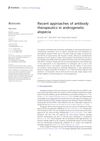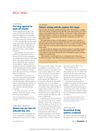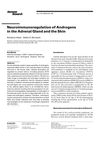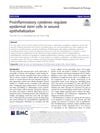Search
forLearn
2 / 2 resultslearn Osteopontin
signaling protein that, when suppressed, may grow hair by reducing inflammation and stem cell loss
Research
5 / 1000+ results
research Recent Approaches of Antibody Therapeutics in Androgenetic Alopecia
Antibody treatments show promise for hair loss but need more research.

research Drug News
Actemra is approved for a specific artery condition, HIV treatment adherence has improved, women may pay more for a hair loss product, and incorrect dosing of blood thinners can be risky.

research Interleukin-6 Null Mice Paradoxically Display Increased STAT3 Activity and Wound-Induced Hair Neogenesis
Mice without the IL-6 gene had more hair growth after injury due to higher activity of a related protein, Stat3.

research Neuroimmunoregulation of Androgens in the Adrenal Gland and the Skin
Cytokines and neuropeptides are key in controlling androgen levels, affecting skin and hair conditions.

research Proinflammatory Cytokines Regulate Epidermal Stem Cells in Wound Epithelialization
Certain immune system proteins are important for skin healing but can cause problems if there are too many of them.
Community Join
3 / 3 resultscommunity NMN Promotes Cell Proliferation and Hair Growth by Reducing Oxidative Stress
NMN shows promise in promoting hair growth by reducing oxidative stress and weakening androgens. It may be a beneficial addition to hair loss treatments like Minoxidil and Finasteride.

community Compressed part of research of theory of androgenic/anabolitic balance. AGA h-responders analytic. Theory of physio-metabolitic method of anti AGA treatment
The treatment for androgenetic alopecia involves using finasteride and minoxidil with intense exercise and cold exposure to boost metabolism and reduce androgenic effects, potentially leading to hair regrowth. This approach may activate biological pathways for improved hair and overall health.
community UPDATE: The theory that explains everything. Please help me make this big!
Hair loss theory involves 3alpha-hydroxysteroid reductase (3AHD) converting DHT to androstenol. Discussion explores potential treatments and encourages more research.